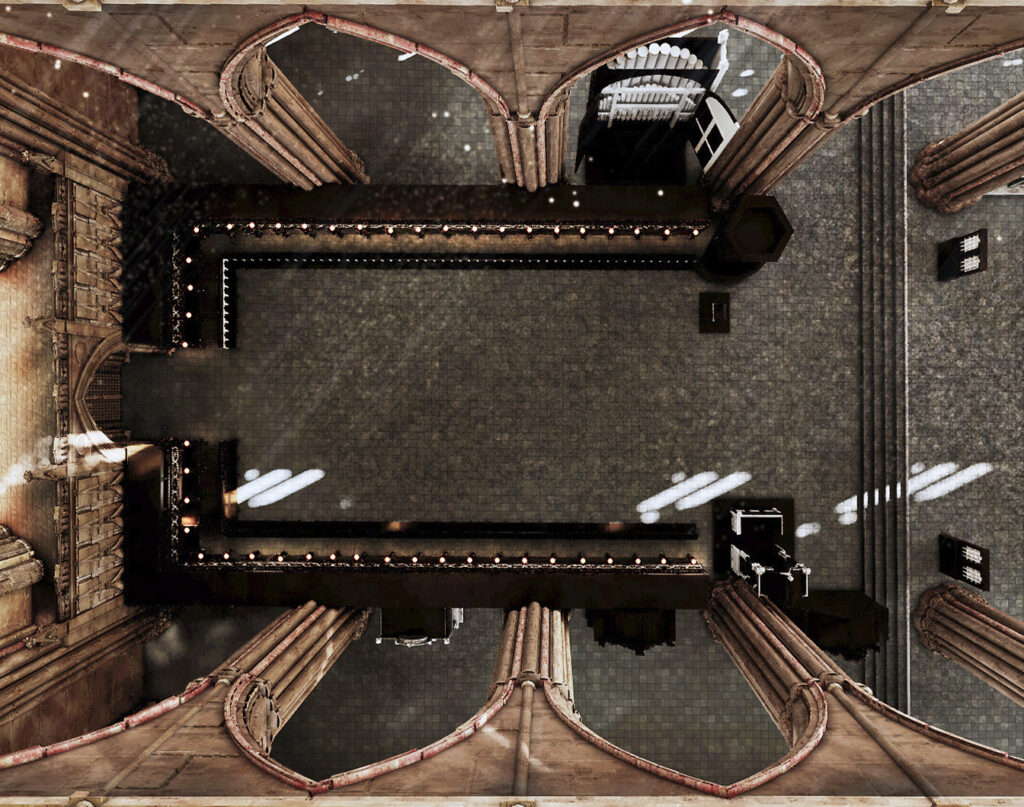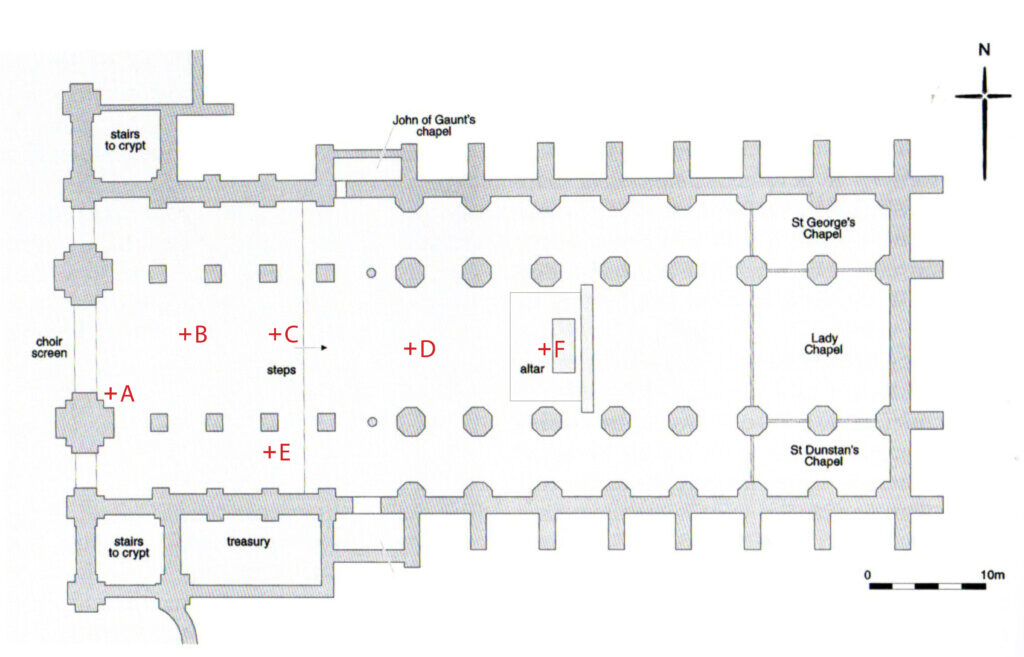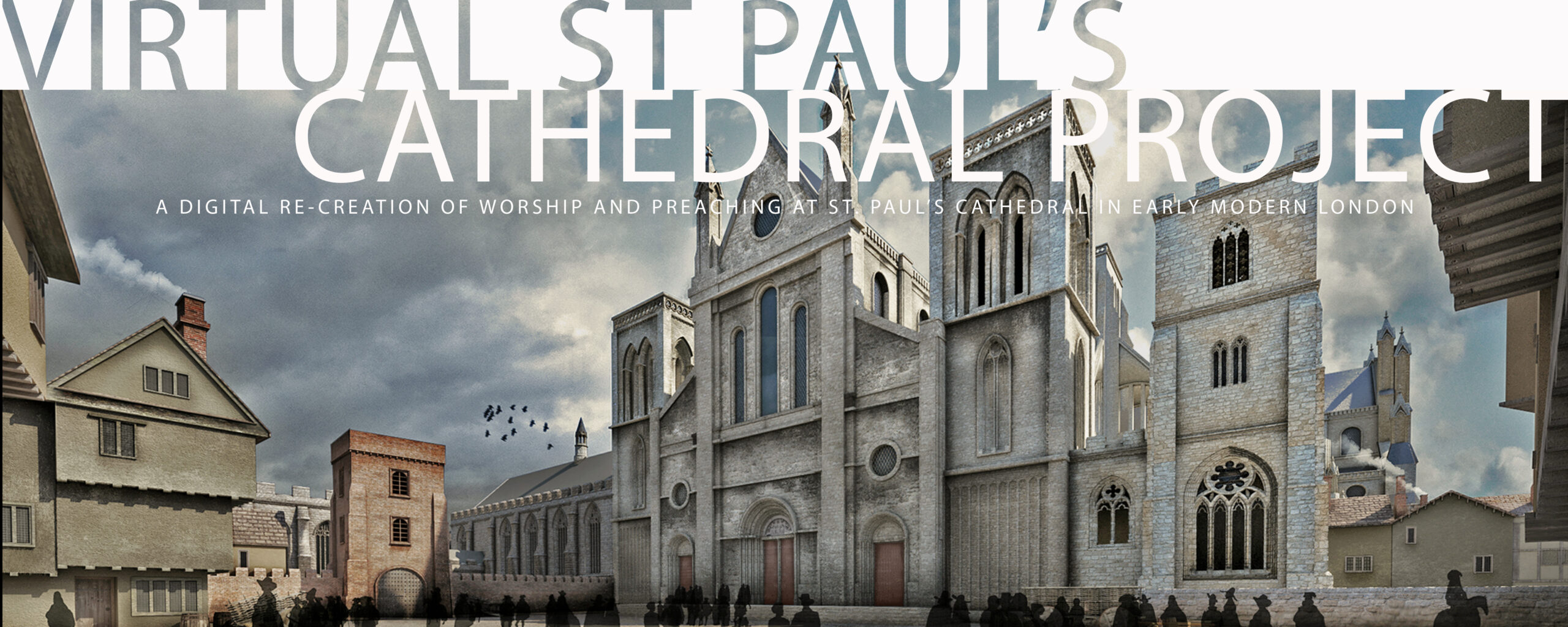And thus do we spend the Sabbath day in good and godly exercises, all done in our vulgar tongue, that each one present may hear and understand the same, which also in cathedral and collegiate churches is so ordered that the psalms only are sung by note, the rest being read (as in common parish churches) by the minister with a loud voice, saving that in the administration of the communion the choir singeth the answers, the creed, and sundry other things appointed, but in so plain, I say, and distinct manner that each one present may understand what they sing, every word having but one note, though the whole harmony consist of many parts, and those very cunningly set by the skilful in that science. — William Harrison, A Description of England (1577)

The worship services modeled on the Cathedral Project include a full day of services for a festival day — Sunday, Easter Day, in 1624 — and an ordinary or ferial day, the Tuesday after the First Sunday in Advent in 1625. Each of these services can be heard from five different listening positions in the Choir of St Paul’s Cathedral, as shown on the chart below.
This set of pages — under the tab LOCATIONS — gives the user the opportunity to listen to all of the six services we have recreated from a single Listening Position. The positions include
- Listen from the Dean’s Stall
- Listen from Mid-Choir
- Listen from the Pulpit
- Listen from Midway to the Altar
- Listen from the South Aisle
Go to pages under the tab SERVICES to listen to each of the six services from all five different Listening Positions.

As one listens to these services in order, unresolved questions arise about how, actually, these services were performed. Were they performed straight through, with the Great Litany following directly upon the completion of Morning Prayer, and Holy Communion following directly after completion of the Great Litany? William Harrison’s account suggests so. If that is the case, and if Izaak Walton’s account of George Herbert’s reading Morning and Evening Prayer in the parish church in Bemerton is correct in placing the hours of services “at the canonical hours of 10 and 4” is correct (although I have been unable to find such a Canon) then the morning order of services at St Paul’s started at 10:00 AM, with Morning Prayer finishing about 11:15 and the Great Litany finishing about 11:45.
Which means that Holy Communion would be not be over until nearly 2:00 in the afternoon, depending on how many people were there to receive the bread and wine of Communion. That means that the clergy, choristers, and congregation at St Paul’s had been in place for nearly four hours without a break, a challenge especially for the younger members of the Choir. But if they took a break of any length at all, they would have had only a short amount of time for lunch between the completion of Holy Communion and the return to the Choir for Evensong and another sermon. So many questions!
